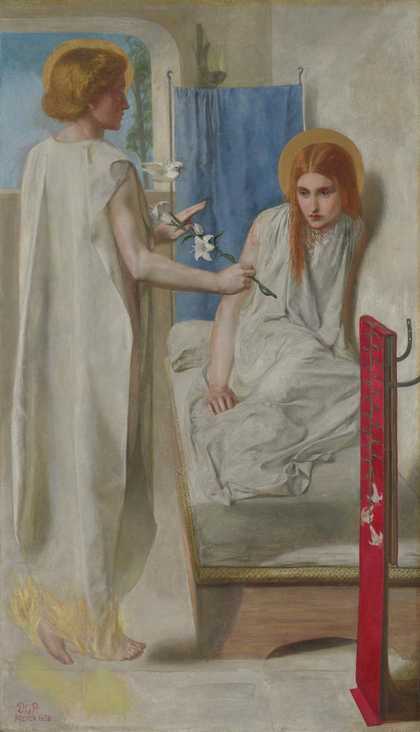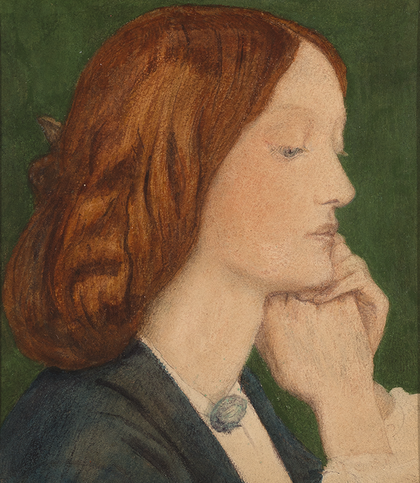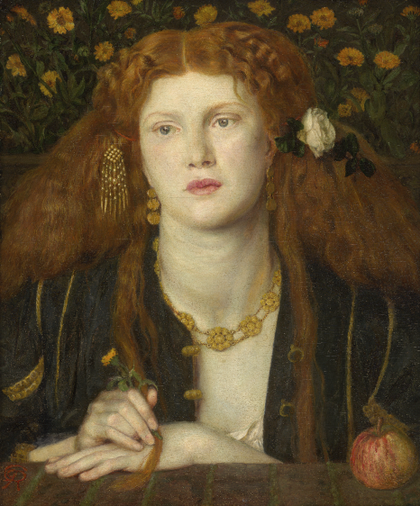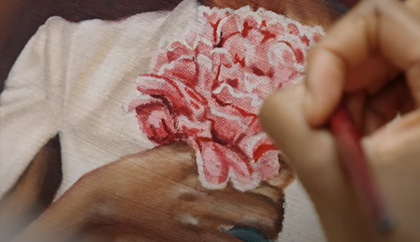The art, life and love of the Rossettis
Take a closer look at the radical romantics who broke all the rules
With The Rossettis exhibition now open at Tate Britain, we look at how this unique, creative family challenged the stereotypes of Victorian Britain – and made art and life their own.
ART
They created rule-breaking art

Dante Gabriel Rossetti
Ecce Ancilla Domini! (The Annunciation) (1849–50)
Tate
The Rossettis wanted their art to reflect their everyday lives in a fast-changing world. They created vivid paintings, drawings, poems, and writings inspired by their modern outlook on love, religion, literature, and society.
The Rossetti siblings, Dante Gabriel, Christina, Maria, and William were all creative from a very young age. Gabriel went to art school (but not for long, he soon dropped out), and both Gabriel and Christina were just 15 when they published their first poems.
Gabriel, along with William and five other art students, started the Pre-Raphaelite Brotherhood. This close-knit group of men and women wanted to do something different and change the ‘soulless’ art of the time. Christina was also a member and wrote poems in their journals.
Gabriel soon met artist and poet Elizabeth Siddal who worked as a model for artists in the group. Everyone took turns modelling for each other: Gabriel put Christina and William in The Annunciation, William Holman Hunt painted Gabriel and William as Italian revolutionaries, and John Everett Millais chose Elizabeth as his now famous Ophelia.
LIFE
They lived unconventional lives

Dante Gabriel Rossetti Elizabeth Siddal 1854 Delaware Art Museum (Wilmington, USA)
The Rossettis invented new ways to live. Their bold new ideas in life, love, and art inspired future generations.
Their father, Gabriele Rossetti, was an exiled Italian revolutionary and poet, who always encouraged them to paint, sketch, or write.
Christina was 11 and working as a young carer when she wrote her first poem. Her first collection of poetry, Verses, was published when she was only 16. At 32, she wrote and published Goblin Market and Other Poems. It was a huge success. Christina, now quite famous, was earning her own income and never had to marry – in fact, she chose not to. She lived with her sister Maria Rossetti, and both stayed single.
Working-class, working women were also part of the Rossetti story. Elizabeth and Jane Morris (who married William Morris, another member of the Pre-Raphaelite Brotherhood) were essentially self-taught artists. Like Elizabeth, Jane was also a sitter for the Rossettis. Fanny Cornforth was a professional model in the same circle. She also worked as a pub owner and later, Gabriel’s housekeeper.
Elizabeth and Jane had a unique sense of style and designed their own outfits. They didn’t wear traditional corsets and left their long hair loose. This was fresh and new – not how women typically dressed.
Elizabeth married Gabriel 10 years after they met, and after Elizabeth's death at just 32, Fanny lived with Gabriel. She was his friend and carer for the rest of his life. Jane and Gabriel were also lovers in his final years. At the time, this blending of different social backgrounds and relationships was not the norm and considered unusual.
LOVE
Their work explores love in all forms

Dante Gabriel Rossetti Bocca Baciata 1859 Museum of Fine Arts (Boston, USA)
The young Rossettis were fascinated with romance. They were inspired by stories from tragedy to obsession in Shakespeare, folk songs, or modern poetry – all which portrayed love in many different ways.
Their work celebrated sensuality, as seen in Gabriel's painting Bocca Baciata. The title means ‘The Mouth that has Been Kissed’ and the painting was inspired by a proverb from an Italian short story collection, The Decameron. Written on the back of the painting, the proverb translates to:
‘The mouth that has been kissed does not lose its good fortune: rather, it renews itself just as the moon does’
Using themselves as models, Gabriel and Elizabeth worked together in his studio. They created medieval watercolours and drawings, depicting dramas of love, temptation, loyalty and betrayal – another example of how their real-life relationships influenced their art.
They hugely inspired each other. After Elizabeth died, Gabriel collected and photographed her drawings, which he used as inspiration for the rest of his life.
The Rossettis is on at Tate Britain until 24 September 2023



